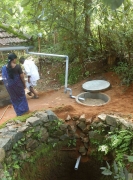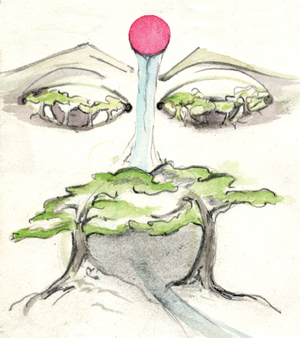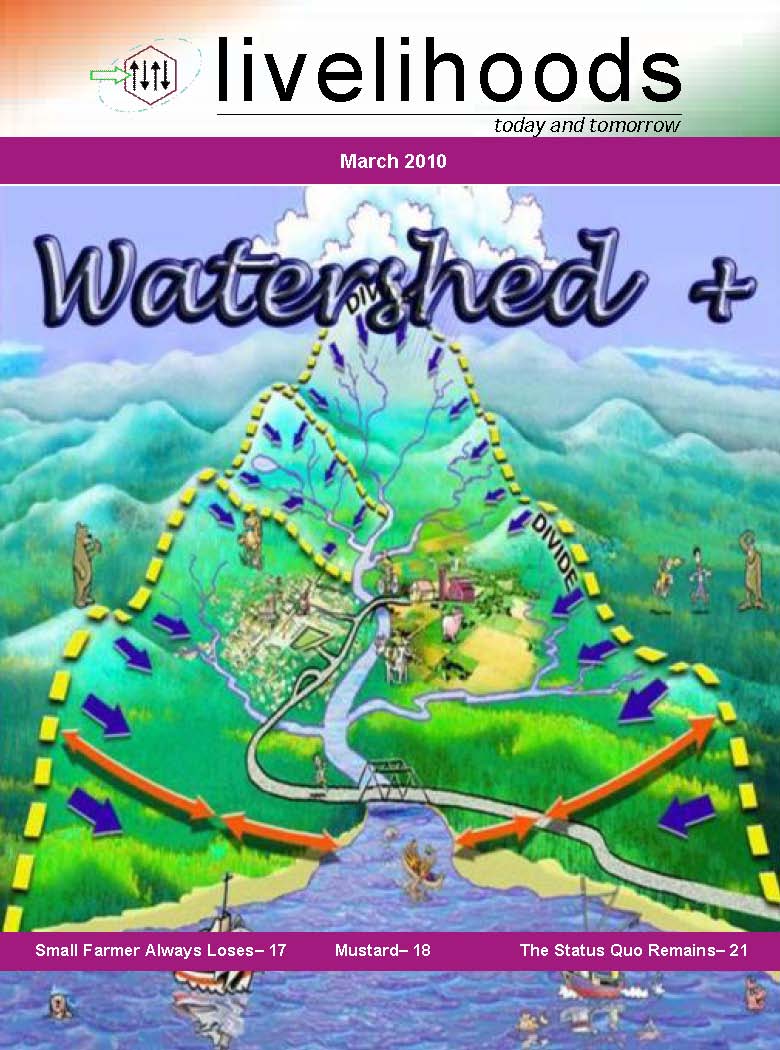Groundwater
Non point source of pollution: State of the art – A research report by the National Institute of Hydrology
Posted on 21 Jun, 2010 04:53 PMThe report presents a review of several aspects of non-point source of pollution, like extent and effects of pollution in surface and groundwater bodies, pollution control, monitoring, modeling and management options. Non-point source pollution originates from diffuse land areas that contribute pollutants to surface and groundwater bodies. Sediments, nutrients and pesticides are transported from croplands either in a dissolved form in runoff or through adsorption onto eroded soil particles. Apart from this it can also enter groundwater through leaching.
Status report of saltwater intrusion and groundwater management studies in coastal and deltaic regions – A research report by the National Institute of Hydrology
Posted on 21 Jun, 2010 04:50 PMThe report presents a literature review on the status of research related to saltwater intrusion and groundwater management in coastal and deltaic environments in the east coast of South India. The area is typically characterized by highly productive and alluvial aquifers and high use of both surface as well as groundwater. Seawater intrusion into the freshwater aquifers is extensive due to increased pumpages.
A quantitative understanding of the patterns of movement and mixing between freshwater and saline water and the factors that influence these processes is stressed in the report. It presents the mechanics of saltwater intrusion through studies by Ghyben and Herzberg and later on by Hubbert. A comprehensive review of studies by Reilly and Goodman relating to saltwater intrusion is discussed. Later advances in understanding saltwater-freshwater relationship through numerical models like sharp interface model and miscible flow model are described.
Surface and groundwater quality studies in Ghataprabha representative basin - A research report by National Institute of Hydrology
Posted on 21 Jun, 2010 01:15 AMThe study analyses the surface and groundwater quality of Ghataprabha representative basin during pre-monsoon and post-monsoon seasons. It looks at the primary impact of land use and cropping pattern on water quality using physico-chemical analysis, geo-chemical classification of groundwater samples and monitoring of groundwater quality.
Streeter-Phelp’s model is applied to understand the variation of dissolved oxygen along the course of the river from a point source. The study attempts to understand the impact of irrigation return-flow and use of pesticides, fertilizers & manures on surface and groundwater quality. The literature review offered indicates a dearth of studies on the subject for hard rock catchments and puts forward the need to do basin-wide as against area-wide studies.
Effective groundwater management in urban areas
Posted on 20 Jun, 2010 06:32 PMOften groundwater pumping is undertaken assuming the resource to be infinite. This myth has been shattered in the last few decades with increasing scarcity and deterioration in terms of quality as a consequence of over-exploitation and mismanagement of this resource to meet competing demands for drinking water and other needs in urban cities. However, managing groundwater is not an easy task.
Training on groundwater, ACWADAM, Pune
Posted on 14 Jun, 2010 12:40 PM 
Organizer: ACWADAM
Main Topics:
Chasing a mirage: Water harvesting and artificial recharge in naturally water-scarce regions - An EPW paper
Posted on 11 Jun, 2010 12:39 PMThis paper refers to the recent plans by the Government of India to undertake artificial recharge of groundwater in over-exploited areas of the country to meet the demands for water and raises certain fundamental questions about the methods used for analysing the hydrological and economic impacts of the interventions.
Mazhapolima Participatory Well Recharge Programme - Concept Note and Process Document (2009)
Posted on 07 Jun, 2010 07:27 PM Mazhapolima is a community based well recharge programme, initiated by the Thrissur District Administration in collaboration with the Panchayat Raj Institutions in the District, and implemented by networking NGOs/CBOs, households, departments and agencies, research institutions, private sector and all other key stakeholders, who are either a water user or a water provider/planner.
Mazhapolima is a community based well recharge programme, initiated by the Thrissur District Administration in collaboration with the Panchayat Raj Institutions in the District, and implemented by networking NGOs/CBOs, households, departments and agencies, research institutions, private sector and all other key stakeholders, who are either a water user or a water provider/planner.
Diversity of approaches and implementation arrangements according to location specific needs centered on sustainable outcome and service levels are the underlying tenets of the programme. The programme envisages recharging of about 4.5 lakh open wells in the district to ensure sustainable access to water.
In remembrance of water: How a conglomeration of mining companies, politicians and real estate developers are endangering the vast aquifers that give Goans their water
Posted on 07 Jun, 2010 01:00 PM Author: Hartman de Souza Art: Jessica Schnabel Content Courtesy: Himal Southasian
Author: Hartman de Souza Art: Jessica Schnabel Content Courtesy: Himal Southasian
Where there is water, there is probably ore beneath.
Having trekked several times to Paikdev’s spring to gulp water pouring out of the moss-covered iron mouth, one would think the mysteries of the journey would fade. But, if anything, they have become more poignant – sitting here at this shrine to the snake deity of the Velip community in the village of Maina, in Goa’s Quepem District. It is here, amidst thousands of hectares of rolling forests, in the foothills of the Western Ghats, home to countless perennial springs and streams, wildlife and more, that a strange conglomeration of mining companies, politicians and real-estate developers are sharpening their collective sword. These activities were already afoot a year ago, with mining operations systematically destroying forests, because, as the government in Panjim stated at the time, the iron ore was needed by New Delhi to keep its nine-percent growth rate on track. This year, the message is no different.
Livelihoods magazine special issue on watersheds
Posted on 07 Jun, 2010 08:14 AM A special issue of the Livelihoods magazine (March 2010) brought out by the Akshara Network for Development Support Services, on Watersheds+.
A special issue of the Livelihoods magazine (March 2010) brought out by the Akshara Network for Development Support Services, on Watersheds+.
Increasing productivity of dry lands is possible through soil and moisture conservation (SMC) efforts results in growth led by increases in the farm output. Separate efforts are required to include the land-less and the vulnerable in this growth, so that they also realize the benefits of improved food security, increased employment and diversification of livelihoods. Such activities are known as ‘Watershed Plus’ interventions, and ‘livelihoods’ explores these activities.
Uttar Pradesh State Government invites public opinion on Groundwater Bill
Posted on 21 May, 2010 03:04 PMIn an attempt to tackle the deteriorating ground water situation in the state, the Uttar Pradesh State Government has drafted the Uttar Pradesh Groundwater Conservation, Protection and Development (Management, Control and Regulation) Bill (2010), and has invited feedback from the public.
Comments have to be sent before 5 July 2010 by email to up.gwd@rediffmail.com or by post to this address: Director, Utttar Pradesh Groundwater Department, Navam Tal, Indira Bhavan, Ashok Marg, Lucknow, Uttar Pradesh.
The draft copy of the Act is uploaded on the UP State Groundwater Department website and can be downloaded here, and is also attached with this post.




